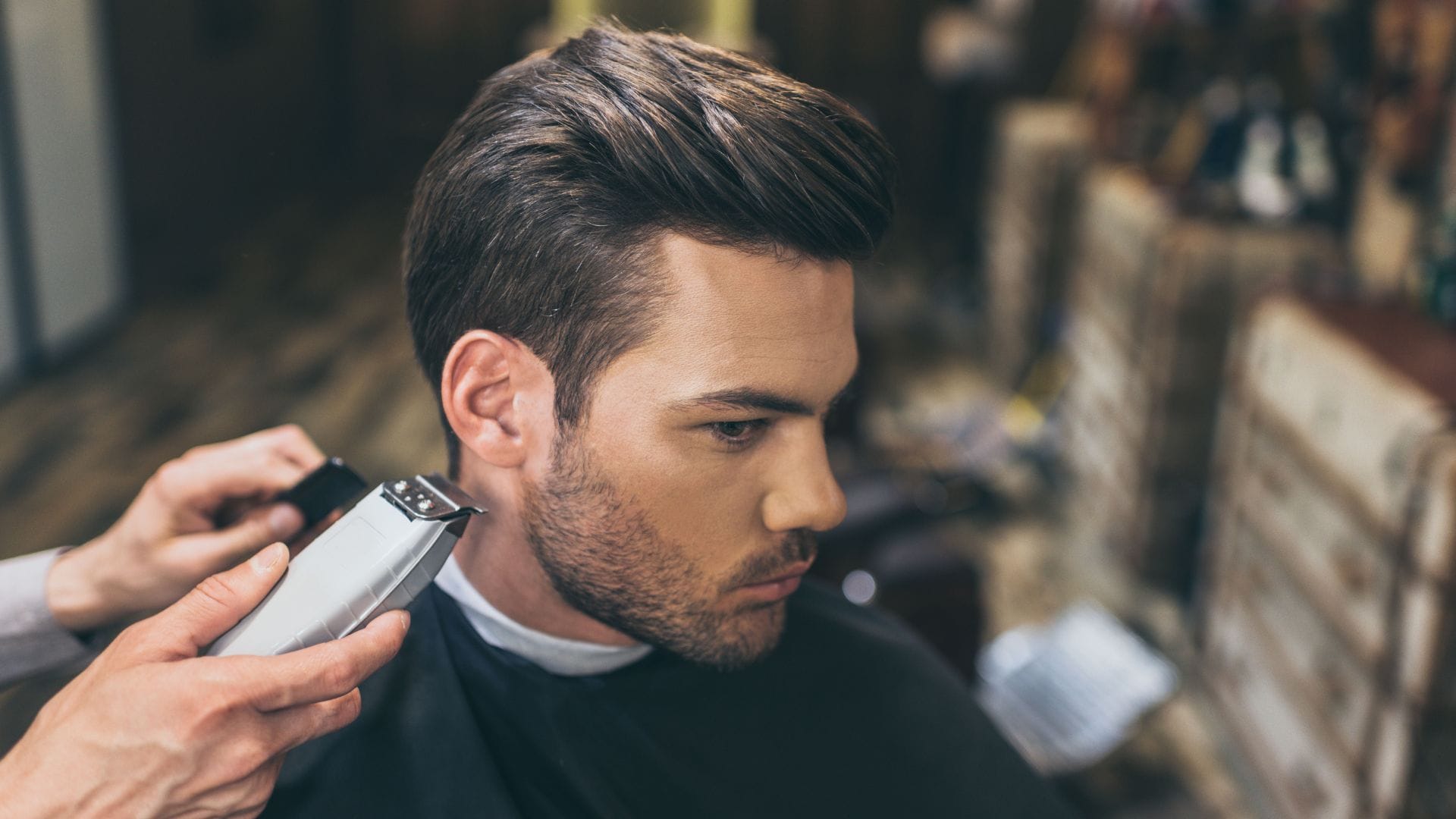Getting a bad haircut can be frustrating, but it’s not the end of the world. With the right approach and a little patience, there are ways to fix it. Whether it’s too short, uneven, or just not what was expected, here are 12 quick ways to salvage a bad haircut and get your hair back to looking its best.
1. Use Accessories to Mask the Cut
If your haircut in New York hasn’t turned out the way you hoped—whether it’s uneven, too short, or not quite the style you had in mind—accessories can be your best friends. Accessories like hair clips, headbands, barrettes, hats, or scarves offer a quick and stylish way to redirect attention and mask problem areas. For example, if a section of your hair appears unbalanced or visibly uneven, decorative barrettes or embellished hairpins can help tuck away those pieces while adding a fashionable touch to your look. Similarly, headbands come in a variety of sizes and styles, allowing you to cover up awkward angles or short sections effortlessly.
If you’re looking for a broader cover-up, hats are a versatile option. From trendy beanies and fedoras to sun hats and caps, hats not only hide the haircut but also allow you to experiment with your overall style. Scarves, on the other hand, offer a chance to be creative. You can tie a scarf into a chic head wrap or turban, which fully camouflages uneven sections while giving you an effortlessly stylish appearance. With so many accessory options, you can easily switch up your look while remaining confident as your hair continues to grow.
2. Consider a Temporary Color Change
Adding a splash of color to your hair might just be the glow-up you need after a bad haircut! A temporary or semi-permanent hair color can work wonders in shifting the focus away from flaws in the cut and instead creating a bold, stylish statement. For instance, experimenting with a vibrant color like pastel pink, lavender, electric blue, or silver can make a short or uneven haircut look intentional and edgy. These bold colors often transform the look entirely, framing the style as avant-garde rather than an accident.
If you’re not up for anything dramatic, you can opt for a subtle, temporary dye or highlights that complement your natural hair color. Even subtle changes, like caramel streaks or warm undertones, can play a role in enhancing dimension and detracting from the awkwardness of the cut. The beauty of using temporary color is that it offers complete flexibility. You can try a new shade for a short period and always revert back to your natural hue. Products such as hair chalk, sprays, or washes come off in just a few shampoos, making them an ideal option if you’re still waiting for your hair to grow back to its desired length or shape. Additionally, adding color refreshes your look and provides an opportunity to play around with your hairstyle in the process.
3. Go for a Layered Cut
If you’re stuck with a bad haircut, a professional stylist might be able to save the day by incorporating layers into your hair. Layering is a strategic technique that helps reshape the hair, blending uneven or choppy sections into a more cohesive and stylish form. Layers can add depth, movement, and texture, which softens the visual impact of a bad haircut while creating a more polished look overall. For example, if your haircut left you with a too-blunt finish that looks sharp or imbalanced, a stylist can add feathered layers to create a more flattering frame for your face.
For shorter haircuts, layering helps to build texture and volume, which can make a bad haircut appear more intentional. On the other hand, for medium or long hair, layers smooth out chunky cuts, thinning ends, or uneven lengths with a seamless touch. Don’t hesitate to ask your stylist for advice on the best layering technique for your hair type. For fine hair, subtle, graduated layers may work best to add dimension without losing density. For thick or textured hair, deeper layering can help remove weight while improving bounce and shape. Regardless of your hair length or texture, layers can elevate your style and create a harmonious balance that distracts from previous mistakes.
With layers in place, your hair will look revitalized and youthful, allowing you to confidently move forward as you wait for it to grow out further.
4. Straighten or Curl Your Hair
Using heat styling tools to straighten or curl your hair can be one of the quickest ways to disguise imperfections in a bad haircut. For those looking to add softness and movement, curling the hair is an excellent option. Loose waves can create the illusion of volume and texture, helping to mask uneven cuts or jagged layers. You can use a curling iron or wand to achieve natural, casual curls or opt for tighter curls to bring more definition and drama to your style.
Alternatively, if you prefer a sleek and sophisticated look, straightening your hair can smooth out messy textures or frizz caused by an unsatisfactory haircut. With a quality flat iron, you can achieve a polished, symmetrical appearance that downplays any disparities in length or shape. However, it’s essential to use heat-protectant products while straightening or curling to prevent damage and maintain your hair’s health. Both techniques are versatile and allow you to control the focus of your hairstyle, effectively creating a distraction from any flaws your haircut might have.
5. Book a Trim at a New Salon
When all else fails, sometimes the most effective solution is to visit a new stylist for a professional touch. A highly skilled professional—such as one at a renowned New York Barbershop—can assess the issues with your hairstyle and offer creative solutions tailored to your preferences and face shape. Even if your haircut feels unfixable, a stylist can work wonders by trimming away harsh edges, evening out lengths, or refining the overall silhouette of your hair. Specialists often have the tools and techniques to approach problem areas with precision, ensuring that the end result feels cohesive and intentional.
Opting for a trim can also help you reset your look without sacrificing much length, especially if you’re in the process of growing out your hair. Additionally, visiting a new salon for an expert opinion can ensure attention to detail and fresh ideas, leaving you with a style that feels rejuvenated, elegant, and better aligned with your vision. When searching for a stylist, read reviews, check portfolios, or ask for recommendations to guarantee you select someone with the expertise to transform your haircut.
6. Use Hair Products to Add Volume
Flat, lifeless hair has a way of emphasizing the flaws in a bad haircut, but the right products can breathe new life into your look. Volumizing products like mousses, root lifters, or blow-dry sprays can amplify your hair’s body and create a more voluminous shape, making uneven layers or choppy ends less noticeable.
Dry shampoo is another handy tool—it not only refreshes your hair but also adds texture that boosts its overall appearance. For additional dimension, sea salt sprays can be used to achieve a tousled, beachy look that enhances the hair’s movement and disguises imperfections. If your haircut feels too thin or sparse, layering on texturizing sprays or powders can provide a fuller, denser effect.
Applying these products strategically, such as focusing on the roots or mid-lengths, helps to create a lifted, dynamic style that distracts from unbalanced cuts. Ultimately, a well-chosen regimen of hair products tailored to your hair type and needs can serve as a reliable ally in camouflaging styling mishaps while enhancing your confidence.
7. Go for a Ponytail or Bun
When faced with a bad haircut, one of the simplest and most effective solutions is to style your hair into a ponytail or bun. These classic, versatile hairstyles work wonders in concealing uneven layers, choppy ends, or other imperfections while keeping your hair neatly out of your face. A high ponytail can create a polished and sleek look, elongating your face and drawing attention away from problematic areas. On the other hand, a messy bun offers a relaxed, effortlessly chic vibe that balances style with practicality.
To create a high ponytail, start by brushing your hair back to gather it at the crown of your head. Use a strong elastic band to secure the ponytail and apply a touch of hair gel or spray to smooth any flyaways for a crisp appearance. Adding a hair tie wrap or decorative accessory can elevate the style further. For a messy bun, begin by gathering your hair into a loose ponytail and twisting it around the base, securing it with bobby pins or a scrunchie. Pull a few strands loose around your face for a soft, romantic effect.
These styles are also adaptable to various occasions. Whether you’re heading to the gym, running errands, or attending a casual outing, a ponytail or bun can provide a quick fix to salvage a bad haircut while maintaining a fashionable look. Best of all, these hairstyles are easy to achieve even for beginners, saving you time and frustration when you’re less than satisfied with your haircut.
8. Opt for a Low-Maintenance Style
If dealing with constant styling issues feels overwhelming, transitioning to a low-maintenance hairstyle may be a long-term solution to managing a bad haircut. Short styles like a sleek bob or a pixie cut are chic and effortless options for anyone seeking flexibility and ease. These styles require minimal everyday upkeep, making them ideal for busy individuals or those who prefer a fuss-free approach to hair care.
A bob typically frames the face in a flattering way, often creating the appearance of fuller volume while hiding uneven cuts. Whether you opt for a classic straight bob, an angled bob, or a wavy layered bob, this haircut allows your hair to grow out into a natural, symmetrical shape. Pixie cuts, with their edgy, bold aesthetic, offer another low-maintenance alternative. This short style requires virtually no styling beyond some light product application, such as a bit of gel or pomade to enhance texture or create definition.
The beauty of these hairstyles lies in their adaptability to suit your natural hair type, whether straight, wavy, or curly. Over time, as your hair grows, it transforms into a more balanced and flattering style, eliminating the stress of constantly managing a bad cut. Both the bob and pixie cut are trendy, timeless solutions for those wanting to hit the refresh button on their hair with a style that’s both cute and practical.
9. Create Waves with a Beachy Look
Waves can be a game-changer when it comes to softening the appearance of a bad haircut. The tousled, beachy look adds texture and movement, helping to balance out uneven layers, blunt edges, or poorly blended sections of hair. With the right technique, waves can create volume and dimension, camouflaging problem areas while enhancing the overall style.
To achieve this look, a curling iron or wand is your best friend. Take small sections of your hair and wrap them around the barrel, holding for just a few seconds to create loose, natural curls. Alternatively, braiding your hair while it’s damp and allowing it to air dry can create a similar wavy effect without the use of heat. For a more casual, windblown finish, use a sea salt spray on the lengths of your hair and scrunch it with your hands. This adds texture and a touch of grit, enhancing the beachy aesthetic.
The beachy wave style is incredibly versatile and pairs well with any occasion. Its relaxed yet stylish feel can make a bad haircut appear purposeful and trendy rather than unintentional. Plus, the added body and flow of waves can bring balance to uneven sections of your hair, making flaws less noticeable. This style works particularly well on medium to longer hair lengths and suits a variety of hair types, offering a quick and temporary fix to improve your confidence while your haircut grows out.
10. Embrace a Messy Look
When a haircut isn’t working out the way you envisioned, a messy, lived-in look can be your savior. Messy hair is not only forgiving, but it also happens to be on-trend and incredibly low-maintenance. To achieve this style, start by adding texture to your hair with a product like mousse, texturizing spray, or dry shampoo. These products add grip and volume, making it easier to tousle your hair into that effortlessly disheveled appearance. You can also experiment with finger-combing your hair instead of using a traditional brush or comb to create a more undone, casual vibe.
The charm of a messy hairstyle lies in its imperfections. This style can effectively disguise sections of your hair that might be uneven, too short, or overly layered. If one side of your hair is longer than the other, an intentionally messy look can make the discrepancy appear purposeful rather than accidental. Similarly, messy styles tend to soften harsh edges or overly blunt cuts by adding a sense of movement and flow to your hair.
To further enhance the look, consider experimenting with loose braids or buns. A messy, low bun with strands framing your face can create a sophisticated yet relaxed style. Alternatively, a slightly unkempt high ponytail can draw attention upward and away from the areas you’re dissatisfied with. The beauty of this approach is its versatility. Whether you’re running errands, heading to brunch, or hanging out at home, a messy look works for nearly any occasion. Plus, it’s easy to spruce up for more formal events by adding accessories like elegant hairpins or decorative headbands. Messy hair isn’t about looking out of control—it’s about finding that balance between styled and natural.
11. Give It Time to Grow
Sometimes the best solution to a bad haircut is as simple as waiting it out. Hair grows naturally at a rate of about half an inch per month, so even a short wait can make a noticeable difference. While this process may require patience, the time it takes for your hair to grow can be an opportunity to focus on maintaining its health. Regular trims—every six to eight weeks—are crucial during the growing-out phase. Although it may sound counterintuitive to cut your hair while waiting for it to grow, trimming removes split ends, which can prevent further damage and breakage. Healthy hair grows faster and looks better overall, making the time investment well worth it.
During this period, consider adjusting your styling techniques to complement the awkward in-between stages of hair growth. For instance, if your haircut is too short for a ponytail, you can use headbands, clips, or scarves to keep stray pieces out of your face while adding a touch of style. Layering and texture can also play a big role in transitioning an undesirable cut into something manageable. You might use a flat iron or curling wand to add waves or curls, giving your hair more volume and concealing uneven lengths.
It’s essential to practice good haircare habits while waiting for your haircut to grow out. This includes using sulfate-free shampoos, moisturizing conditioners, and nourishing masks to keep your strands strong and hydrated. Avoid excessive heat styling and consider incorporating protective hairstyles, such as braids or low buns, that minimize tension on your hair. With a little patience and care, your hair will eventually grow out of its current shape and reach a length where it can be reshaped into a style you love.
12. Try This Season’s Trends
Another great way to handle an imperfect haircut is to make it a statement by incorporating current fashion trends. Seasonal hairstyle trends often emphasize bold or experimental looks, which can be a clever way to make your haircut appear intentional rather than accidental. For instance, this season trends might include fringe bangs, a wet slick-back look, or even playful accessories like oversized barrettes and clips.
Fringe bangs, for example, are a fantastic way to reframe your face and shift attention away from the parts of your cut you’d like to downplay. If you’re feeling adventurous, you could even have a stylist adjust your current cut to suit the trend, transforming it into something fresh and exciting. Similarly, a slicked-back hairstyle is perfect for taming unruly sections and emphasizing the sleek sophistication of your look. With just a touch of styling gel and a comb, you can create a polished appearance that’s both trendy and forgiving of uneven layers or missteps in your haircut.
Accessories can also be a fun way to participate in trending styles. Pearl-lined bobby pins, decorative headbands, or statement scrunchies can inject personality into your look while distracting from imperfections. Seasonal trends often focus on unique textures and finishes as well. For instance, a glossy, high-shine effect achieved with a defining cream or serum can make your hairstyle appear intentional and put-together despite underlying flaws.
Fashion trends are constantly evolving, so keep an eye on social media platforms, magazines, or even runway shows for ideas. Adopting these styles demonstrates your ability to stay ahead of the curve, turning what could have felt like a “bad haircut” into a bold statement of individuality and personal style. By experimenting with what’s trending, you can breathe new life into your hair and find confidence in any situation.
Conclusion
Bad haircuts happen to the best of us, but with these quick fixes, it’s possible to turn things around. Whether it’s using accessories, trying a low-maintenance style, or simply embracing your new look until it grows, there are plenty of ways to fix a bad haircut. Try experimenting with different styles, or if you’re in New York, consider visiting a New York Barbershop for expert advice. There’s always a way to make any cut work for you!


